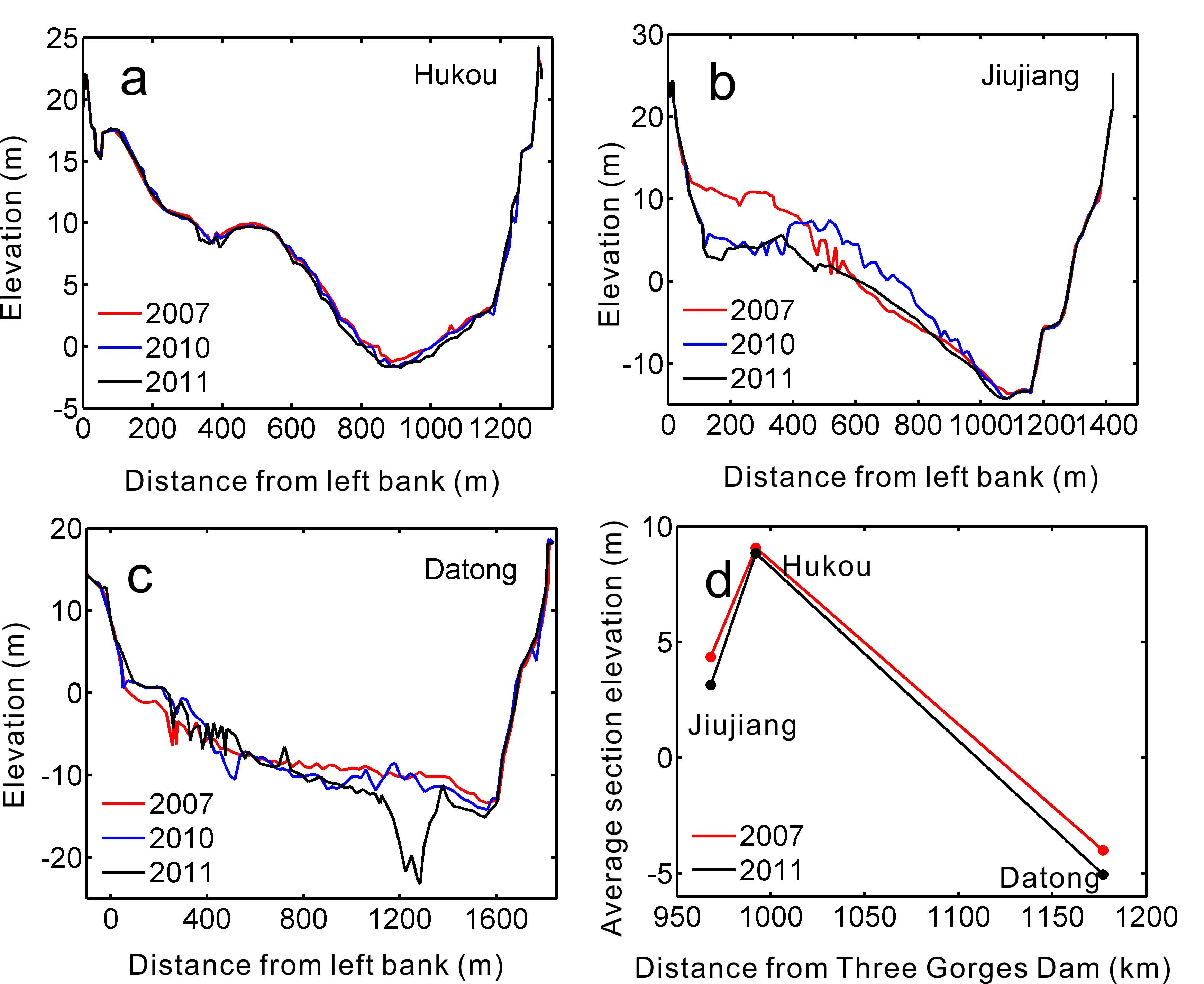Linkage between Three Gorges Dam impacts and the dramatic recessions in China’s largest freshwater lake, Poyang Lake
Despite comprising a small portion of the earth’s surface, lakes are vitally important for global ecosystem cycling. However, lake systems worldwide are extremely fragile, and many are shrinking due to changing climate and anthropogenic activities. Here, we show that Poyang Lake, the largest freshwater lake in China, has experienced a dramatic and prolonged recession, which began in late September of 2003. We further demonstrate that abnormally low levels appear during October, 28 days ahead of the normal initiation of the dry season, which greatly imperiled the lake’s wetland areas and function as an ecosystem for wintering waterbirds. An increase in the river-lake water level gradient induced by the Three Gorges Dam (TGD) altered the lake balance by inducing greater discharge into the Changjiang River, which is probably responsible for the current lake shrinkage. Occasional episodes of arid climate, as well as local sand mining, will aggravate the lake recession crisis. Although impacts of TGD on the Poyang Lake recession can be overruled by episodic extreme droughts, we argue that the average contributions of precipitation variation, human activities in the Poyang Lake catchment and TGD regulation to the Poyang Lake recession can be quantified as 39.1%, 4.6% and 56.3%, respectively.
Fig. 1. Map showing the Poyang Lake catchment, with (a) Poyang Lake’s location in relation to the Changjiang River, the Three Gorges Dam and the East China Sea; (b) the Poyang Lake catchment; and (c) the “thousand-eye bridge” built during the Ming dynasty (photo taken at Duchang on 3 January, 2015). The map was created with ArcGIS10.1.
Fig. 4. The geomorphologic evolution of transverse sections at (a) Hukou; (b) Jiujiang; (c) Datong; and (d) the variation in river-lake topographic gradients. The figure was created with Matlab R2009b.
List of relate publications:
-
Scientific Reports ,
2015 ,
5
: 18197


